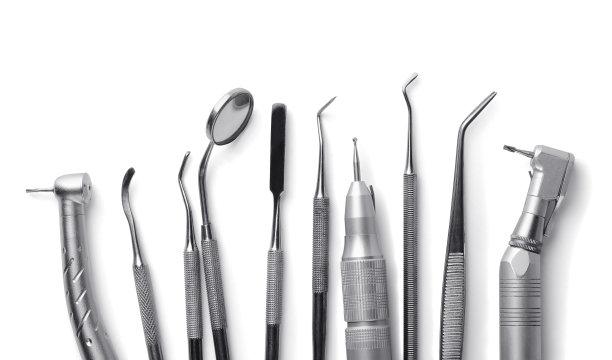Exploring the Benefits and Advancements of Dental Implant Treatment for Long-lasting Oral Health and Aesthetic Restoration
Summary: Dental implants have revolutionized the field of restorative dentistry, offering a permanent solution for tooth loss. This article explores the numerous benefits and advancements associated with dental implant treatments, emphasizing their role in achieving long-lasting oral health and aesthetic restoration. We will delve into four key aspects: the functional advantages of dental implants, advancements in technology and techniques, their positive impact on oral health, and the aesthetic benefits they provide. Each facet highlights how dental implants have become a favored choice for individuals seeking both dental functionality and improved appearance, thus underlining their significance in modern dental care.
1. Functional Advantages of Dental Implants

One of the primary benefits of dental implants is their ability to restore full functionality to the mouth. Unlike dentures, which can shift and cause discomfort while eating or speaking, dental implants are anchored securely into the jawbone. This stability allows for better chewing efficiency, enabling patients to enjoy a broader diet without fear of their prosthetic slipping.
Additionally, dental implants act as a natural tooth root, providing stimulation to the jawbone. This stimulation is essential for maintaining bone density and preventing the bone loss often associated with missing teeth. The preservation of jawbone integrity not only supports the surrounding teeth but also contributes to the overall structure of the face.
Furthermore, dental implants require minimal maintenance once placed, in contrast to other restorative options. Routine oral hygiene practices, such as brushing and flossing, are usually sufficient to keep them in excellent condition, eliminating the need for specialized cleaning products or frequent dental visits solely for maintenance.
2. Advancements in Technology and Techniques
The field of dental implants has witnessed significant technological advancements over the years, enhancing both the effectiveness and efficiency of treatment. One notable innovation is the introduction of 3D imaging techniques, which allow for precise planning of implant placements. This technology enables dentists to visualize the patient’s oral anatomy in detail, ensuring an accurate fit and optimal positioning of the implants.
Moreover, advancements in implant materials, such as titanium and zirconia, have improved the biocompatibility and durability of implants. These materials not only offer a strong foundation for the prosthetic teeth but also reduce the risk of complications and rejection, leading to higher success rates in implant procedures.
Another groundbreaking development is the exploration of immediate loading dental implants, where patients can receive a temporary tooth on the same day as the surgery. This immediate restoration helps to meet patients’ aesthetic desires without prolonged waiting times, making dental implants an increasingly attractive option for many.
3. Positive Impact on Oral Health
Dental implants play a critical role in maintaining oral health. When a tooth is lost, the surrounding teeth can begin to shift, leading to misalignment and other dental issues. Implants help preserve the alignment of neighboring teeth, providing a stable foundation that encourages proper bite and jaw function.
Additionally, the presence of a dental implant prevents the progressive bone loss that can occur when a tooth is absent. Modern dentistry emphasizes the importance of maintaining jawbone health for overall wellbeing. By integrating with the bone, dental implants halt the deterioration process and help maintain facial aesthetics, thus playing a crucial role in oral health.
Regular dental visits remain essential for monitoring the surrounding tissues and overall oral health, but with dental implants, patients can enjoy a lower risk of developing gum disease commonly associated with tooth loss. This risk reduction contributes to healthier gums and a more vibrant dental environment.
4. Aesthetic Benefits of Dental Implants
Beyond functionality, dental implants significantly enhance the aesthetic appeal of a patient’s smile. Customizing the crown that is fitted on the implant allows for perfect color matching with natural teeth, creating an indistinguishable look. This attention to detail ensures that patients can confidently smile without worrying about the appearance of their dental prosthetics.
Additionally, the preservation of facial structure is an often-overlooked aesthetic benefit of dental implants. By maintaining jawbone density, implants help prevent the sunken facial appearance that can occur with missing teeth, thus contributing to a youthful appearance. This positive effect on facial aesthetics can enhance self-esteem and overall quality of life.
Furthermore, as society increasingly values appearance, having a full, attractive smile can improve an individual’s social interactions and professional opportunities. Dental implants can serve as a powerful tool for personal branding and self-confidence, leading to benefits beyond mere oral health.
Summary:
The exploration of dental implant treatment reveals their profound benefits encompassing functionality, technology advancements, oral health impact, and aesthetic improvements. As advancements in techniques continue to enhance their effectiveness, dental implants have established themselves as a cornerstone in restorative dentistry. They not only restore lost teeth but also ensure long-lasting oral health and a confident smile.
This article is compiled by Vickong Dental and the content is for reference only.


